Poodle outline drawings offer a simple and elegant way to capture the unique shape and charm of this popular dog breed. Many artists and designers use these clean, minimal lines to create appealing images suitable for logos, art projects, or decorative purposes.
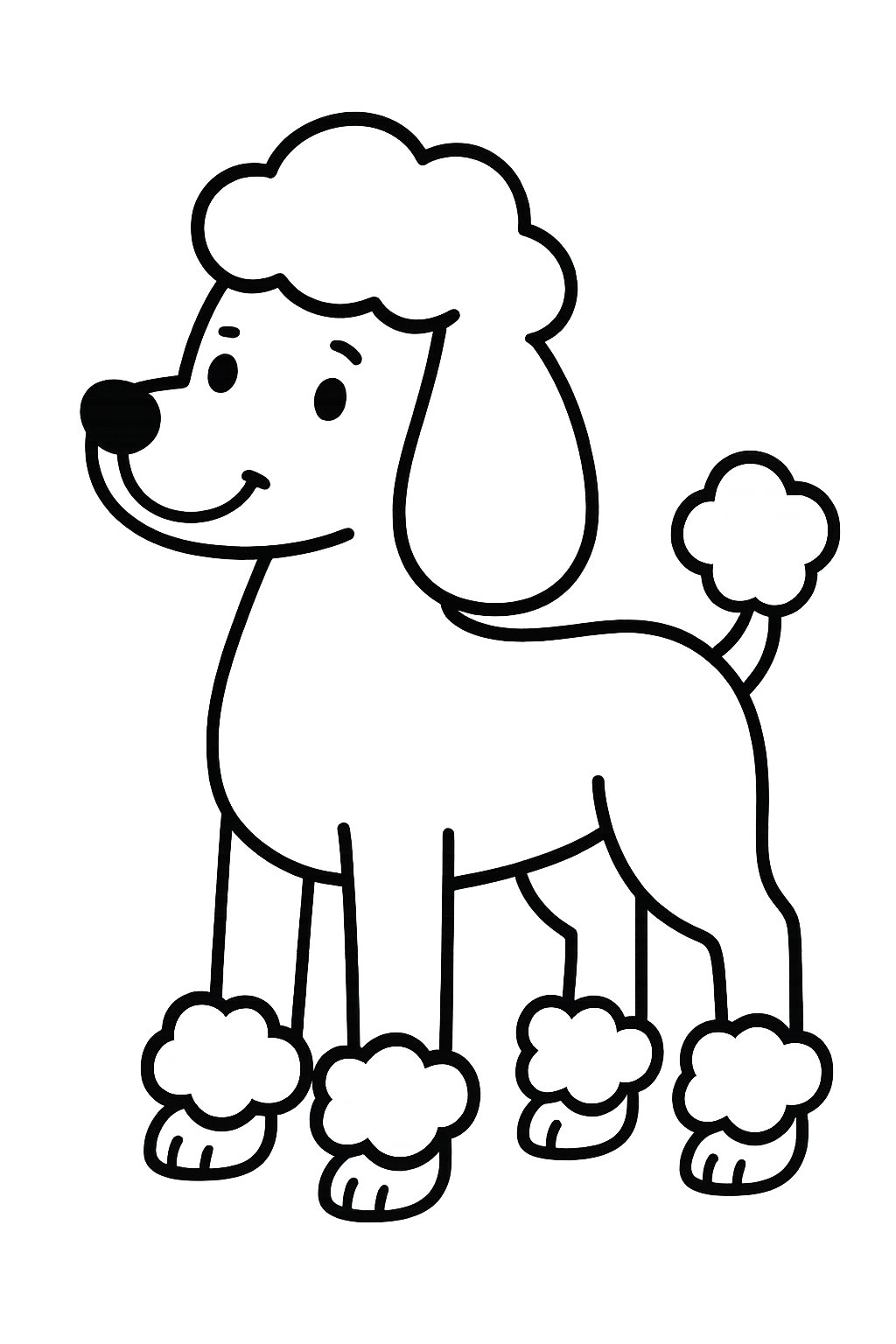
These outline drawings are valuable because they provide a clear framework that can be easily customized or used as a base for more detailed work. They allow for creative expression while maintaining the recognizable features of the poodle, making them accessible for both beginners and experienced artists.
1) Fluffy Head and Chest Outline
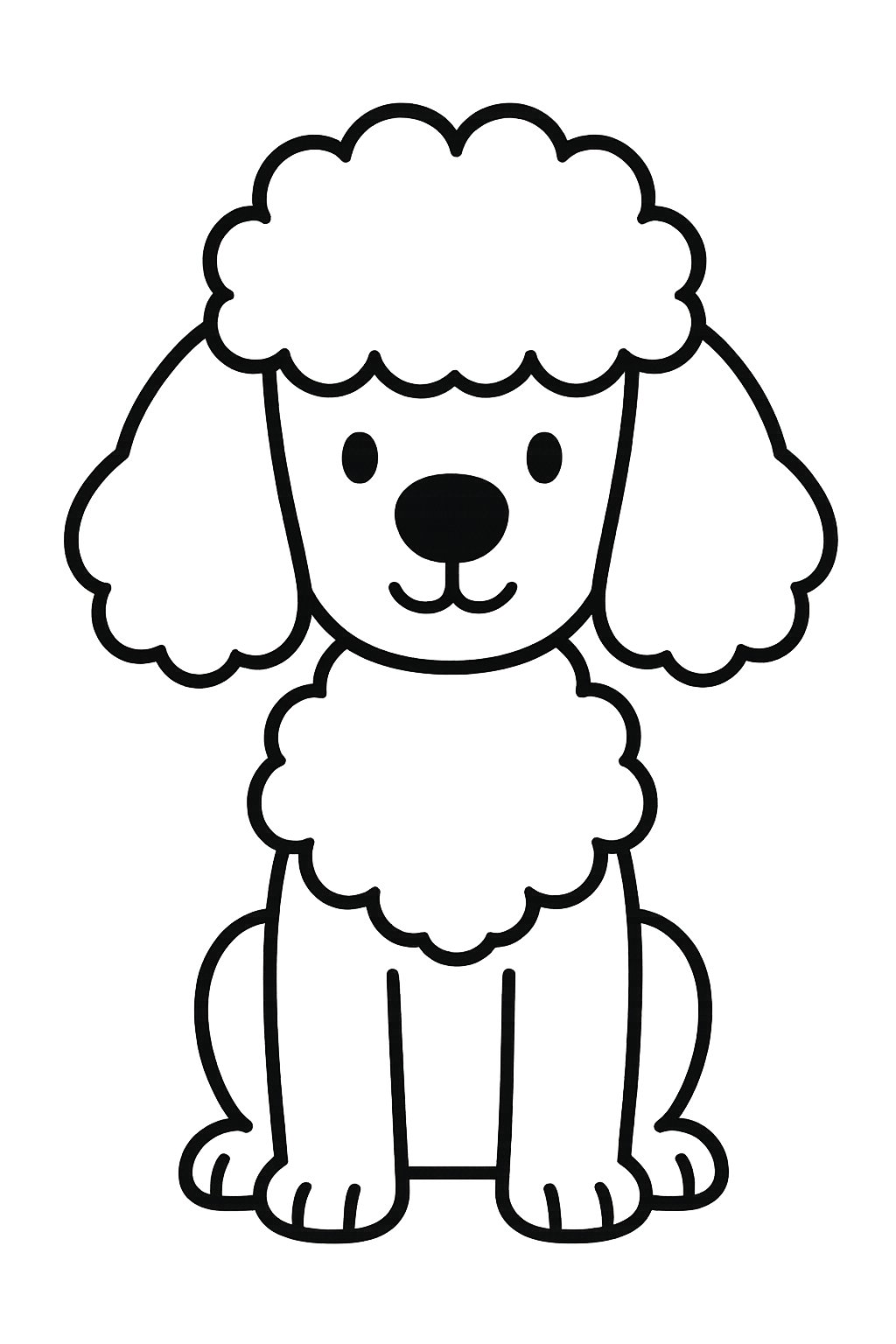
The fluffy head and chest are key features in a poodle outline drawing. They often appear as one large, soft shape. This makes the dog look full and rounded. Artists start here to capture the poodle’s signature look accurately.
For examples, see the detailed guides on how to draw the poodle’s head and chest outline. Poodle Drawing – How To Draw A Poodle Step By Step
2) Simple Side Profile with Curly Fur
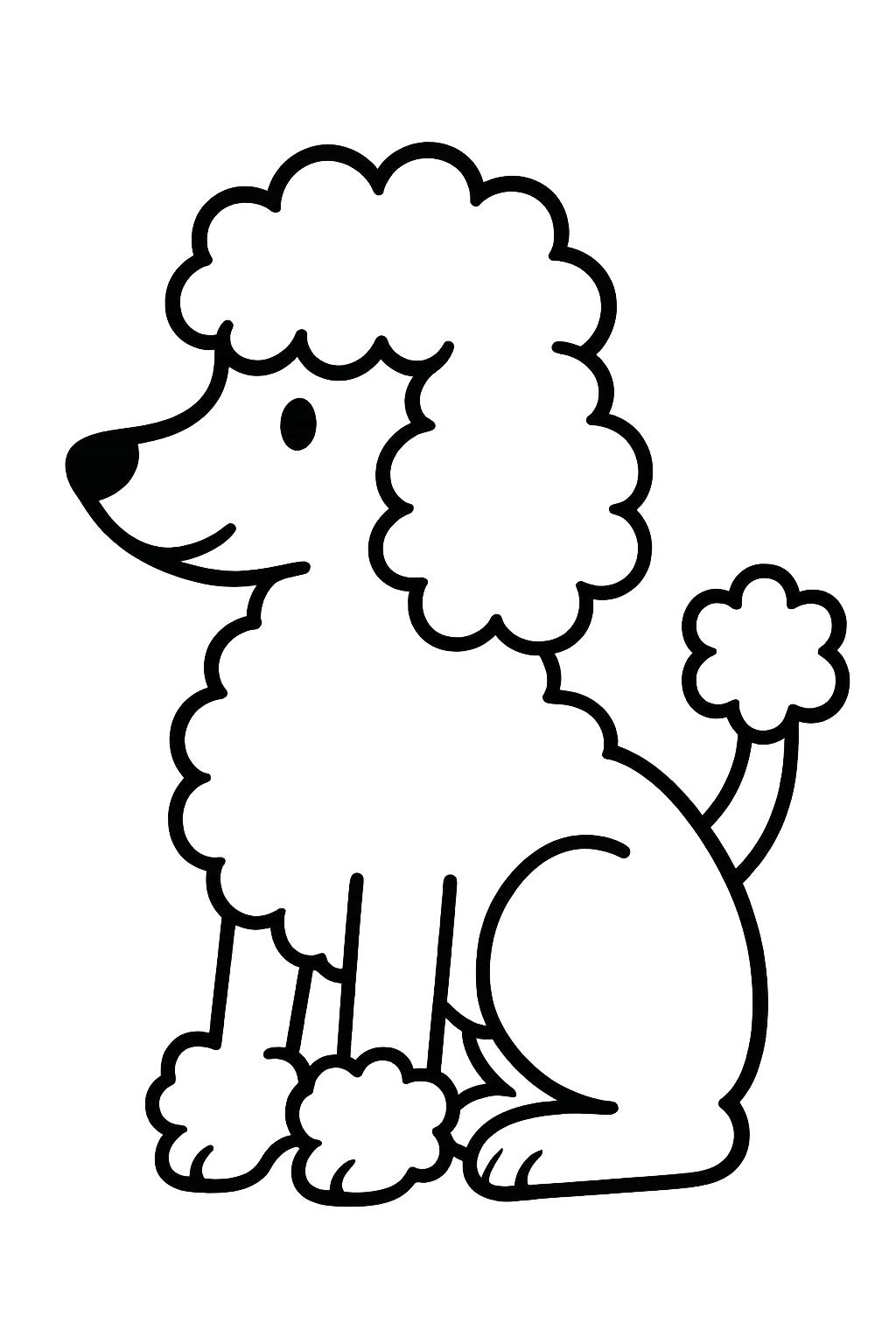
This drawing shows a poodle’s side profile with clear curly fur details. The curls are made using small, curved lines to capture the texture simply. It helps highlight the poodle’s unique coat in a clean and easy-to-follow style. For examples, see poodle outline images on Shutterstock.
3) Minimalist Poodle Silhouette
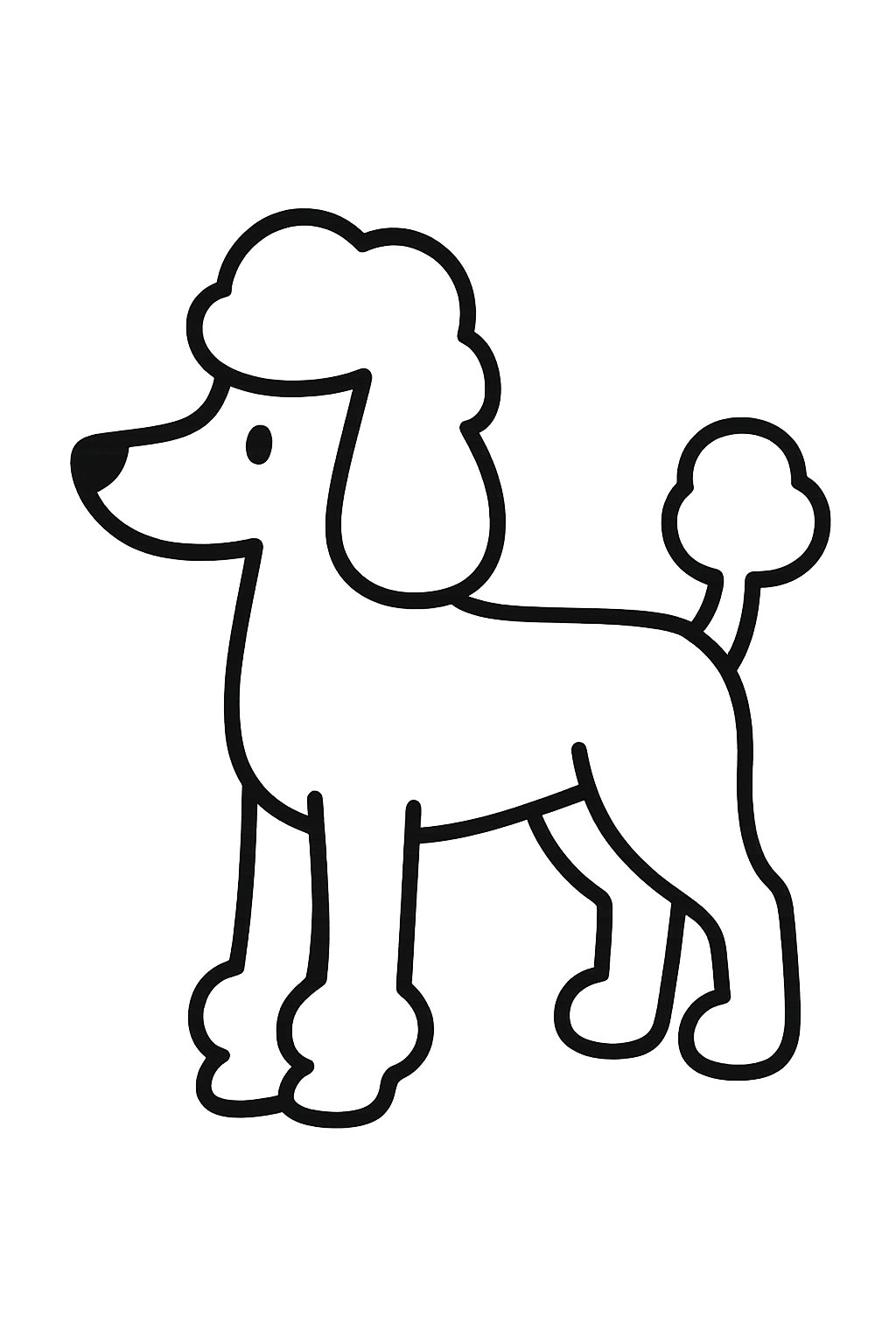
Minimalist poodle silhouettes use simple lines and shapes to show the dog’s form. They focus on clean, clear outlines without extra details. This style is popular for art and design because it is easy to recognize and looks modern. Examples can be found in minimalist poodle line art collections like those on Etsy.
4) Step-by-Step Cute Poodle Drawing
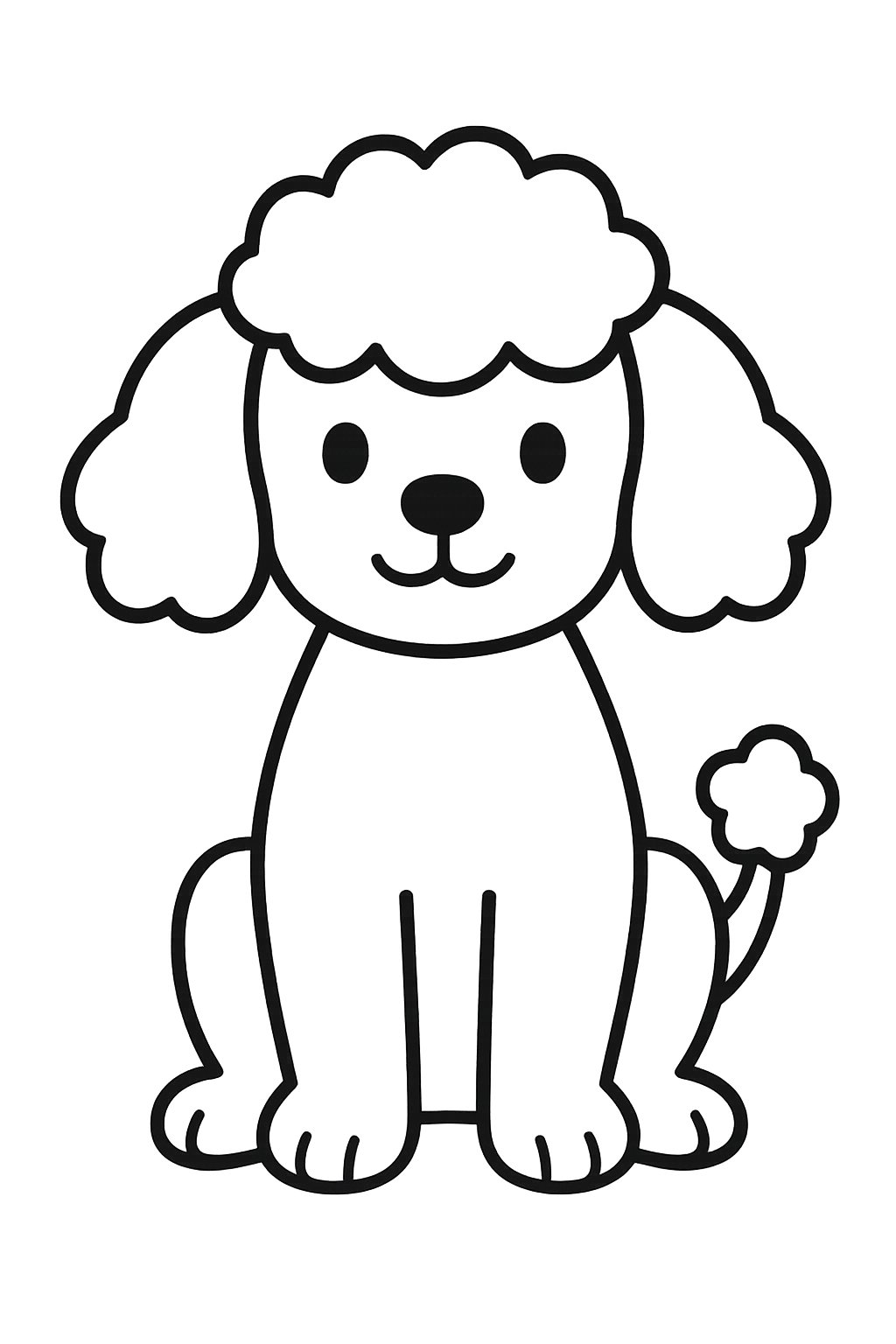
They start by sketching the fluffy head and chest using bumpy lines. This creates the poodle’s trademark curly fur texture. Next, simple shapes form the eyes, nose, and ears to capture its cute face. Following each clear step helps build the full outline easily.
For more detailed guidance, one can follow a step-by-step cute poodle drawing tutorial.
5) Detailed Poodle Face Close-Up
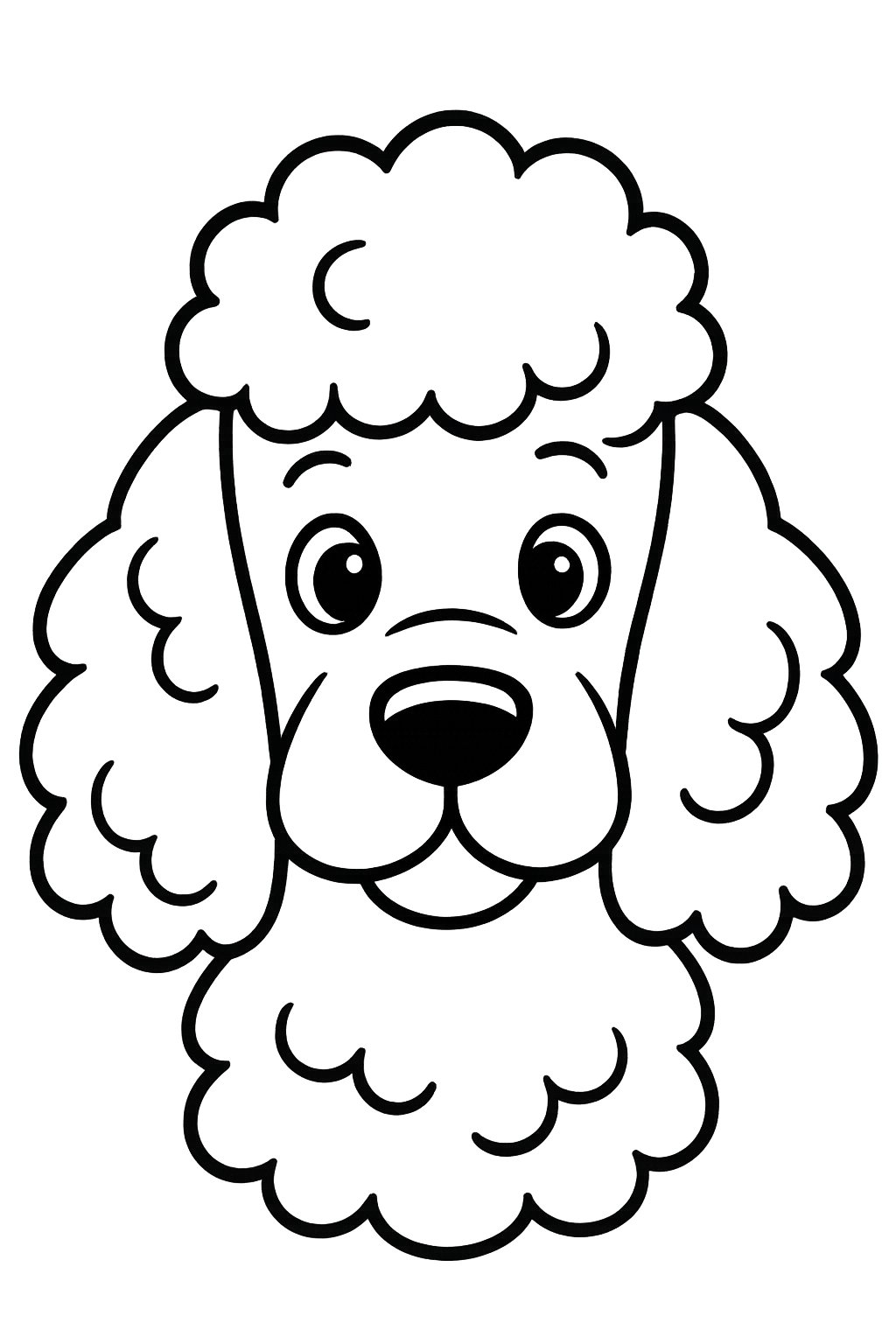
A detailed close-up of a poodle’s face highlights its unique features. Artists focus on the eyes, nose, and curly fur texture to add depth.
This type of drawing helps capture the poodle’s expression. It also shows the soft curls around the muzzle clearly.
For reference, using poodle outline drawings can guide the shape and details.
6) Poodle Sitting Pose Outline
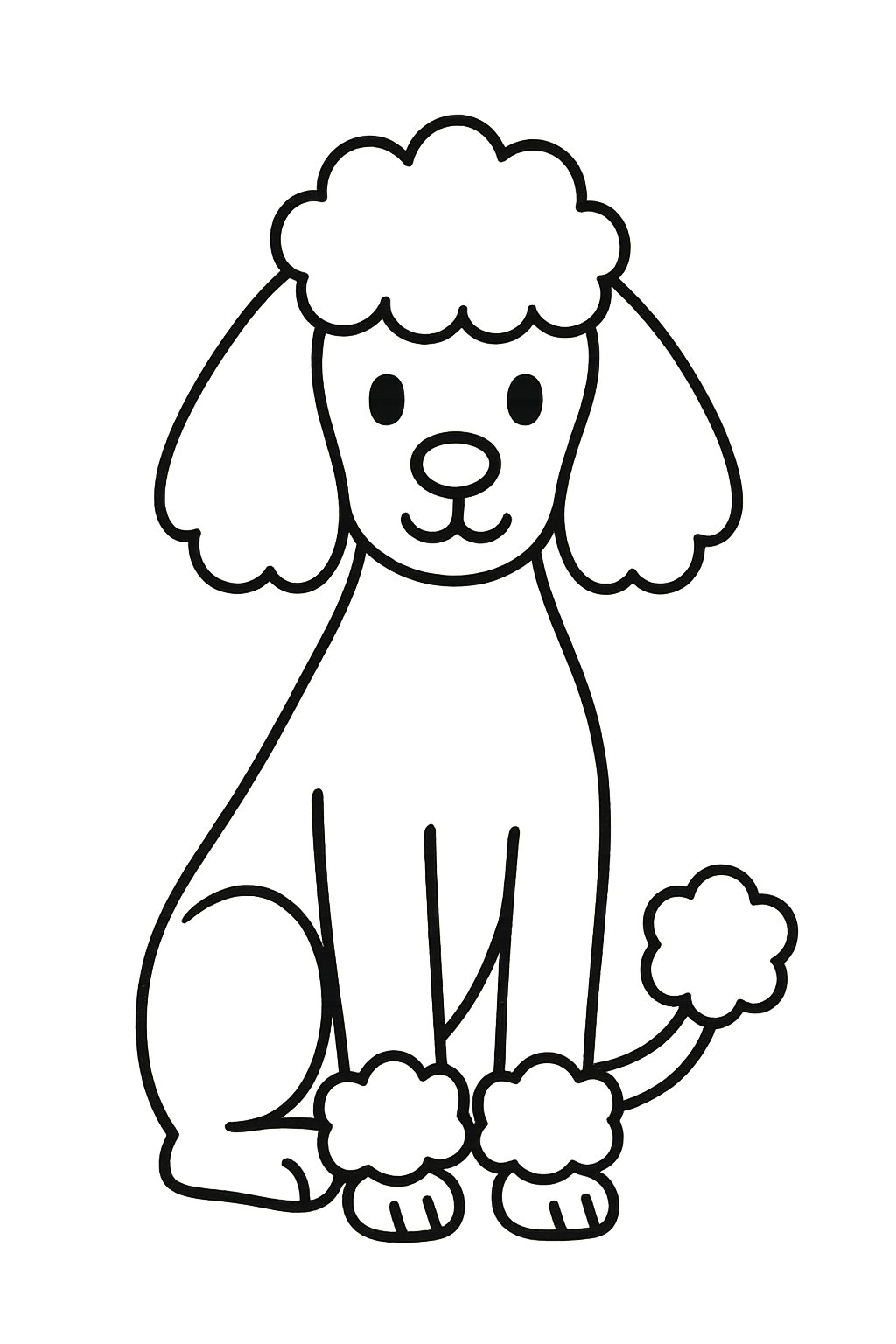
The poodle sitting pose outline captures the dog in a calm, balanced position. It shows the body upright with legs folded neatly under. This simple pose is popular for clear and recognizable poodle drawings. Many choose it for its natural and easy-to-draw shape, as seen in various stock image collections like Poodle Sitting stock illustrations.
7) Fluffy Tail and Legs Focus
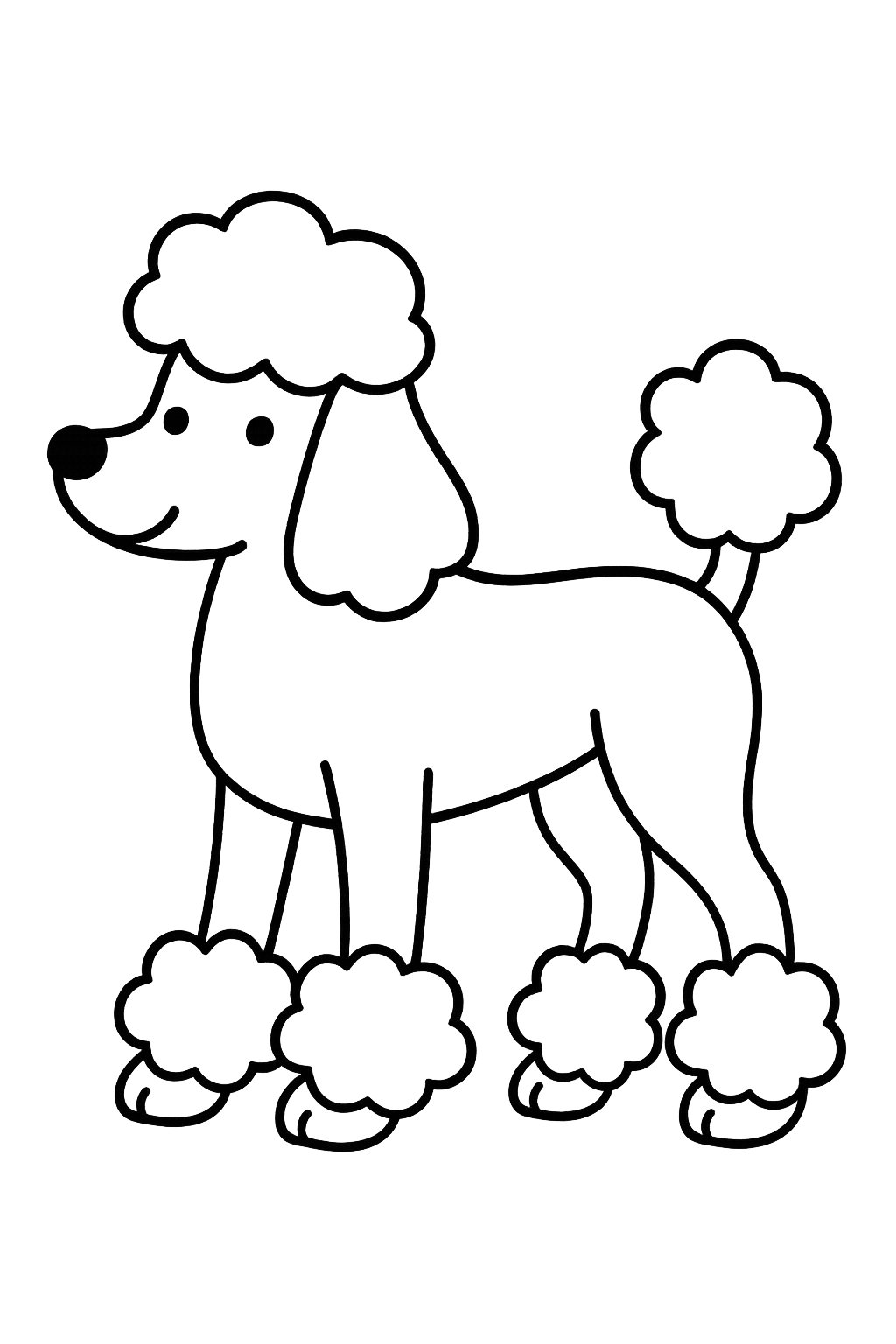
The outline should highlight the poodle’s distinct fluffy tail and legs. Soft, rounded curves can show the trimmed fur typical of the breed. This detail helps capture the poodle’s unique grooming style and adds character to the drawing.
Essential Techniques for Poodle Outline Drawing
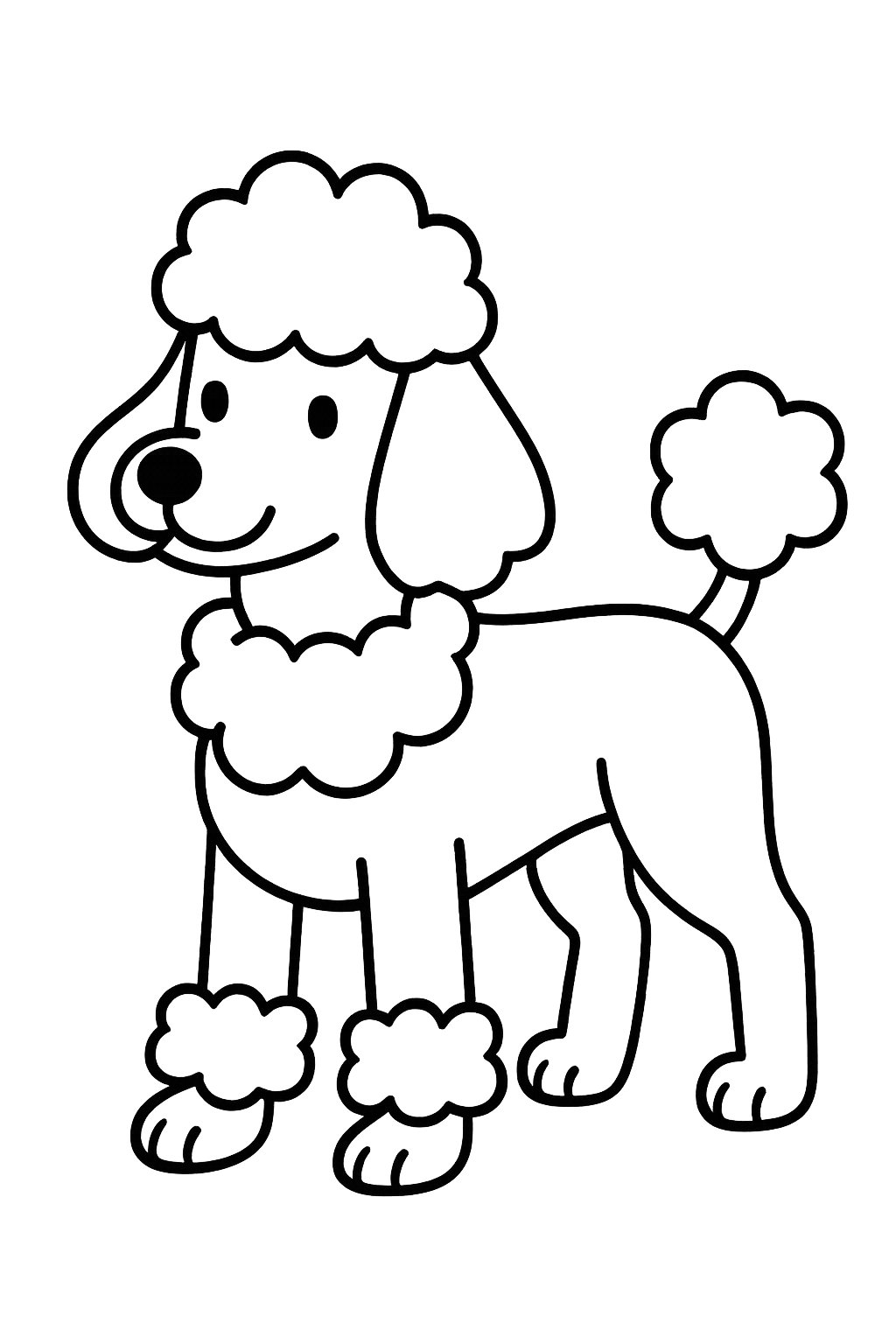
Creating a clear and recognizable poodle outline depends on choosing the right tools, understanding the dog’s basic shape, and controlling the line strokes. These elements work together to capture the fluffy texture and elegant form typical of poodles.
Choosing the Right Drawing Tools
Artists start with tools that suit both the drawing style and the desired level of detail. A soft pencil like a 2B or 4B helps outline the general shape gently. This allows for easy corrections and smooth, flowing lines.
For finer details, using a sharp, fine-tipped pencil or pen is important. It defines the contours of the fur and facial features precisely. Some prefer high-quality markers and colored pencils to add bold outlines and shading on smooth paper.
The drawing surface also matters. Smooth paper helps pencils and markers glide without tearing, which is good for delicate lines and fluffy textures.
Proportion and Anatomy Basics
Poodles have distinct proportions that make their outline unique. The head and chest often appear as one large fluffy section, while the limbs and tail have softer, cloud-like shapes.
Key points include the size relationship between the head and body, the curve of the neck, and the placement of floppy ears. Capturing these shapes helps maintain the dog’s recognizable silhouette.
Artists focus on drawing a balanced shape. They use large, bumpy lines for fluff and smoother lines for legs and paws, ensuring the overall structure looks natural and well-proportioned.
Linework and Stroke Consistency
Consistent linework creates a clean and polished drawing. Varying the thickness of strokes adds interest and texture to the design.
Using short, wavy strokes can mimic the poodle’s curly fur. Meanwhile, longer, smoother lines work well for outlining the body and limbs.
Switching between light and dark strokes helps show depth and fluffiness. It’s important to keep the pressure steady to avoid uneven or shaky lines, which can make the drawing look messy rather than delicate.
For practice, many artists repeat simple outlines before adding detail. This builds confidence in controlling hand movements and stroke lengths.
For more detailed guidance, a step-by-step tutorial like the one on how to draw a poodle can be very helpful.
Incorporating Style and Creativity
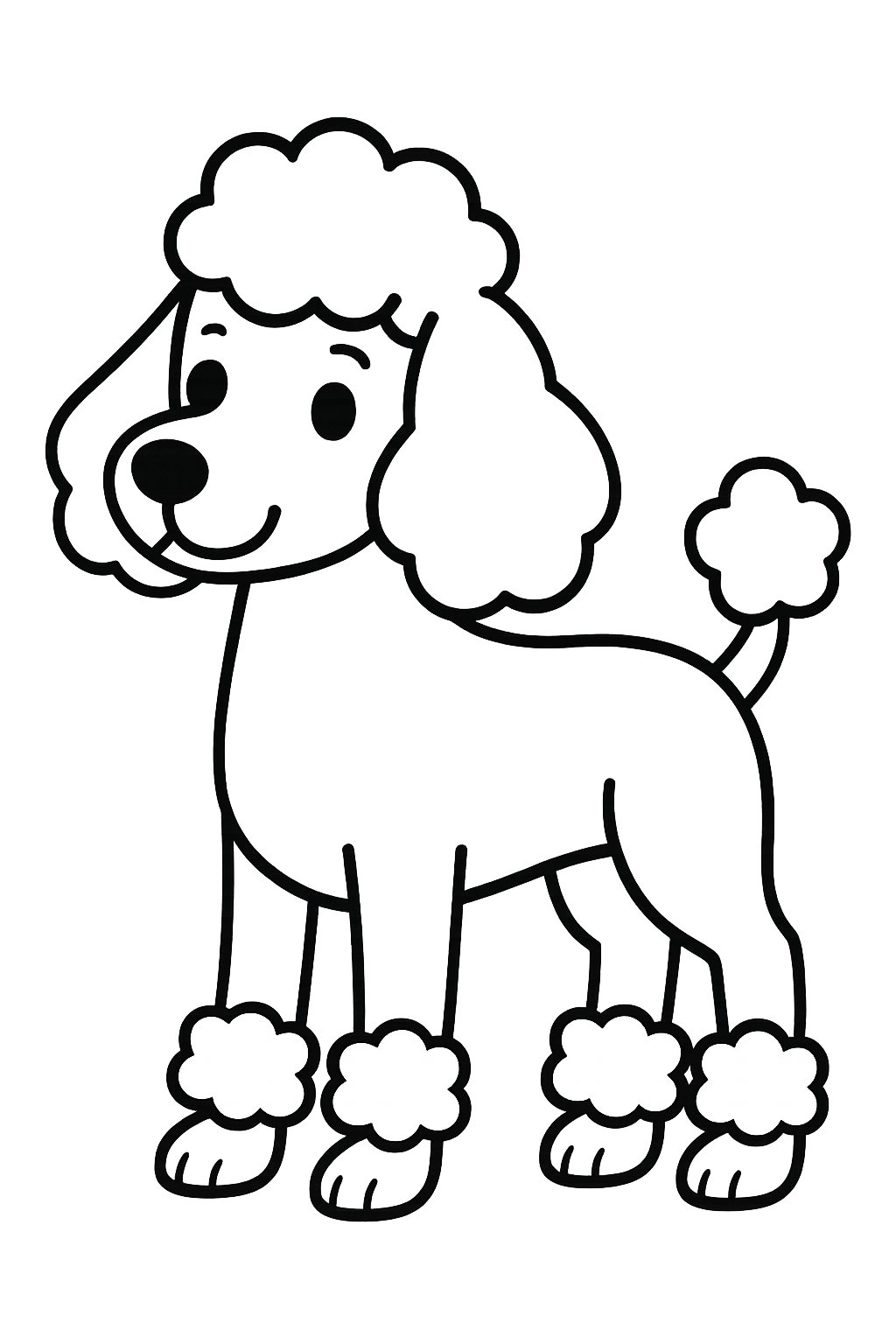
Drawing a poodle outline offers many chances to explore different styles and add unique details. Focusing on key features and personal artistic choices can make the drawing stand out and reflect the artist’s vision clearly.
Stylizing Poodle Features
To create a distinctive poodle outline, attention to specific features is vital. Poodles have characteristic fluffy fur that can be represented using wavy or bumpy lines. This technique emphasizes the texture without needing full shading.
Eyes and ears are also important. The artist can exaggerate the size or shape to give personality, such as larger eyes to make the dog appear friendly or alert ears for a lively effect. The tail can be drawn with a small puff at the end to match breed style.
Creating contrast with clean, smooth lines alongside textured ones makes the outline more dynamic. This balance helps highlight the poodle’s unique form in a simple drawing.
Adding Personal Artistic Touches
Personal touches bring life to a poodle outline beyond basic shapes. Artists may add accessories like bows, collars, or even small patterns on the fur to reflect creativity.
Playing with line weight—thicker in some areas and thinner in others—adds depth and interest. For example, heavier lines around the head frame the face, while finer lines can show delicate details like whiskers.
Color choices or leaving the outline plain can also express style. Some artists keep silhouettes minimal while others apply colorful fills to make the image pop. Using a grid or step-by-step guides can help maintain proportions while exploring these touches.
Experimentation with these elements encourages a unique and expressive poodle outline drawing. For more ideas, viewing poodle drawing guides can be helpful.
